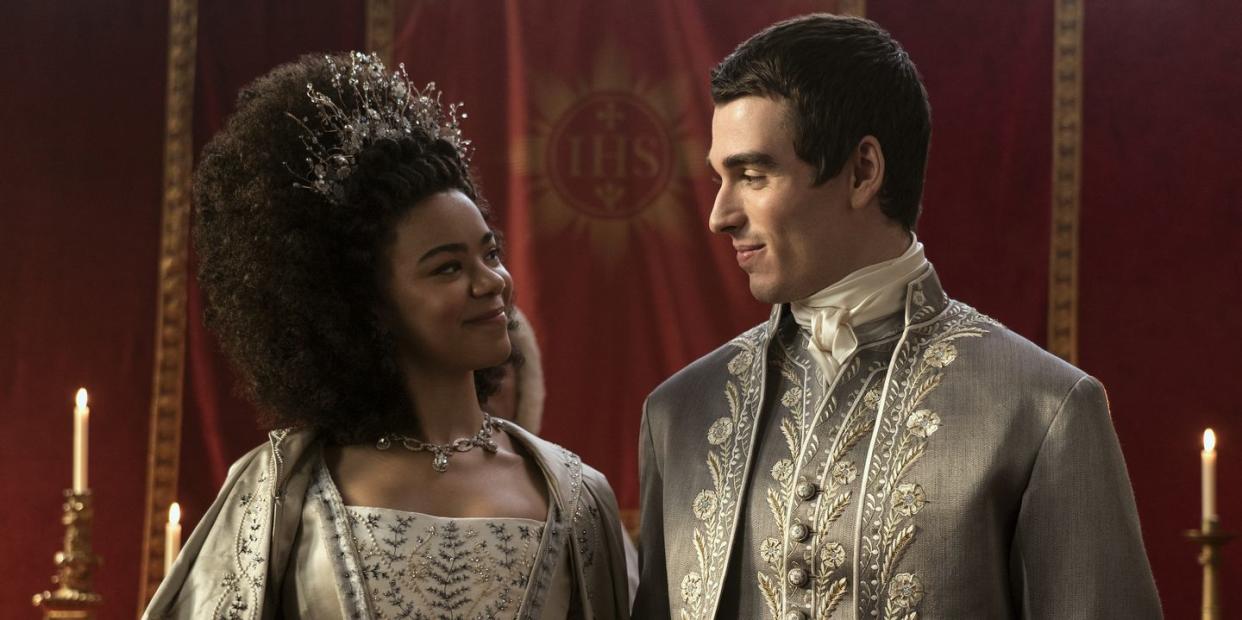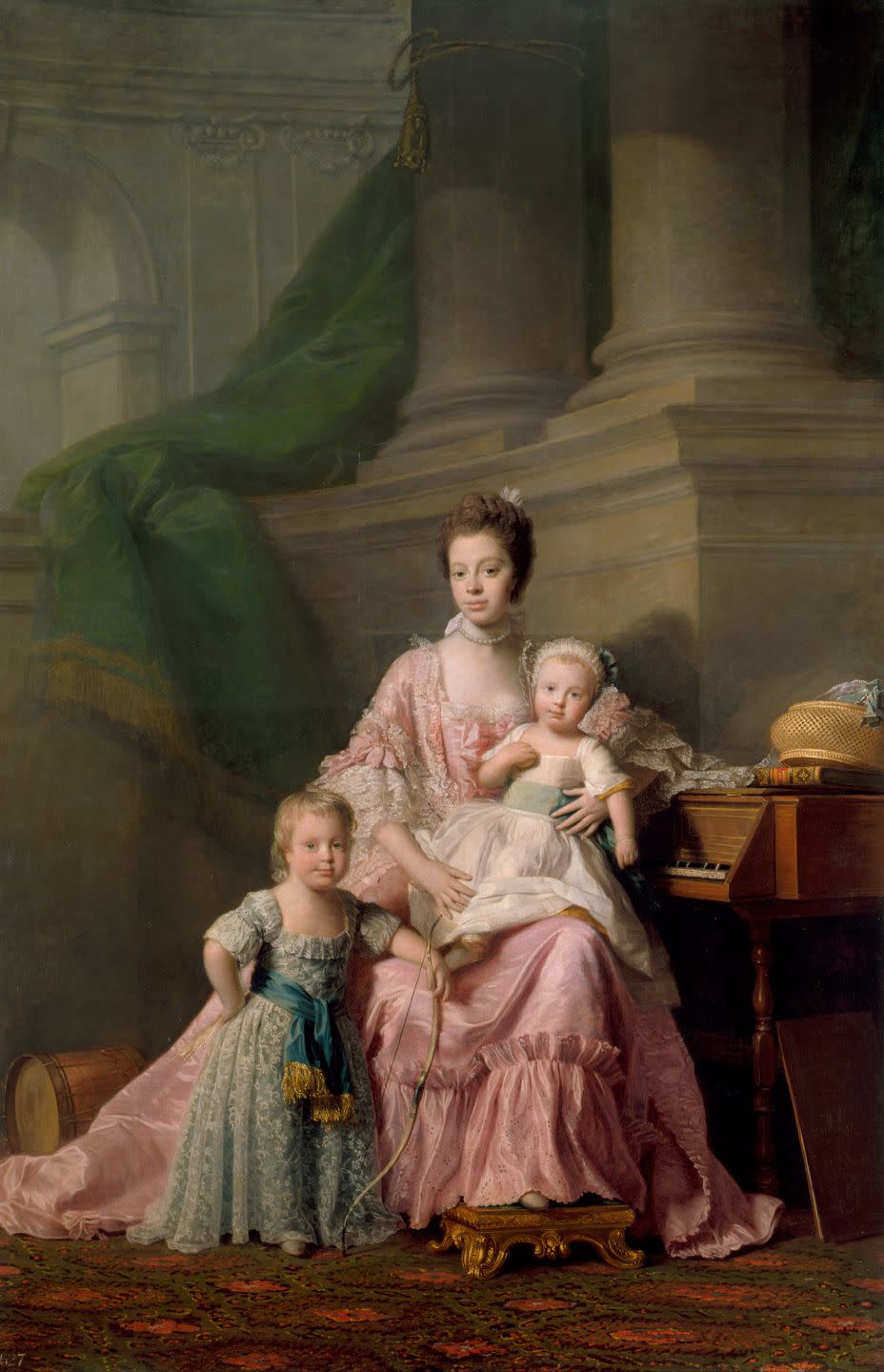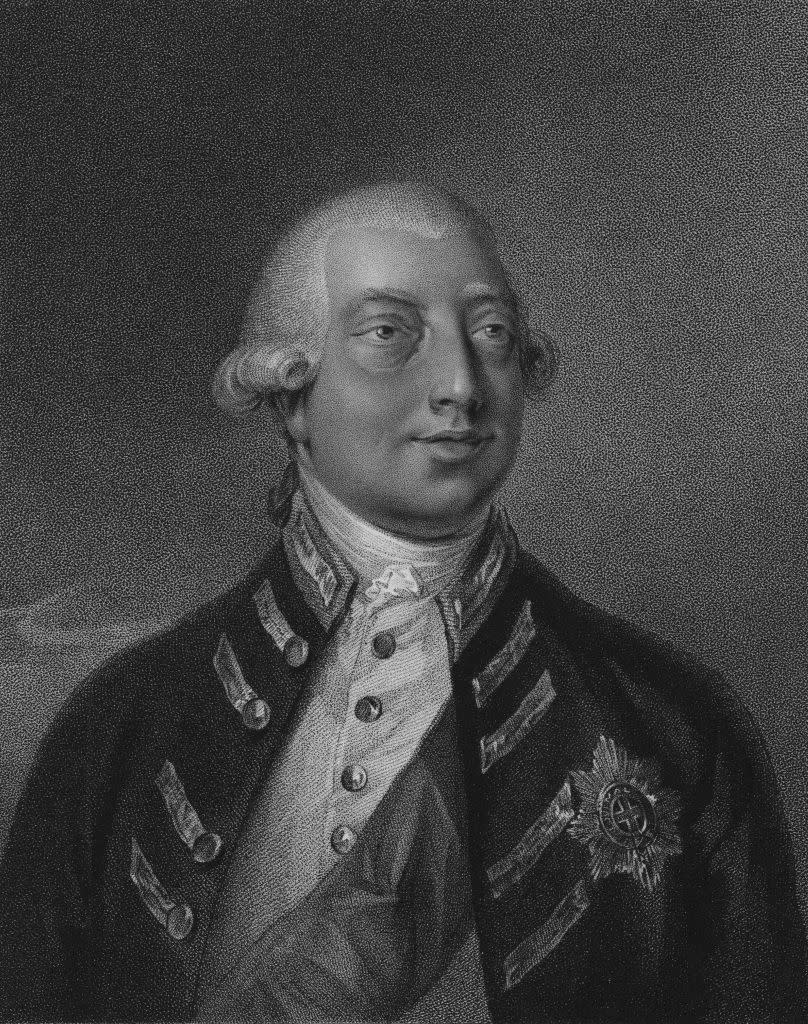The Real Love Story of Queen Charlotte and King George III That Inspired the Bridgerton Spinoff

- Oops!Something went wrong.Please try again later.
- Oops!Something went wrong.Please try again later.
- Oops!Something went wrong.Please try again later.
- Oops!Something went wrong.Please try again later.
- Oops!Something went wrong.Please try again later.
Although the Bridgerton universe is almost entirely fictional, two characters who are based on real people are set to take center stage in a spinoff origin tale.
The six-episode prequel Queen Charlotte: A Bridgerton Story is now streaming on Netflix. According to the streaming service, the series portrays the “epic love story” between the title character and her husband, King George III. Golda Rosheuvel reprises her role as Charlotte from the original series, with India Amarteifio and Corey Mylchreest playing the young queen and king, respectively.
Epic or not, the marriage of the real Charlotte and George was filled with high points that showcased their commitment to each other, as well as distressing times of illness—plenty for creator and writer Shonda Rhimes to draw from. Here’s a look inside the lives of one of Britain’s most famous ruling couples.
Married at First Sight
Born on June 4, 1738, George William Frederick wasn’t expected to survive his premature birth. The future King George III did, of course, and three weeks after his father’s death in 1751, his grandfather King George II put the young royal in line to inherit the British throne. The younger—and still single—George succeeded his grandfather in 1760 at age 22, making his search for a wife urgent. He eyed Charlotte, then 17, over other candidates for a couple of key reasons.
Born Princess Sophia Charlotte in 1744 in Mecklenberg-Strelitz, which is now part of Germany, she had good royal credentials and was a Protestant. And, as simple as it sounds, she was sweet and compliant. According to the preservation charity Historic Royal Palaces, George’s advisor Lord Harcourt said Charlotte was “no regular beauty,” but she did have pretty eyes and “white and even teeth.” Not exactly the description you’d expect to inspire a TV romance, but their partnership blossomed.
Their actual courtship lasted all of six hours, as they were married the same day Charlotte reached London: September 8, 1961. The roughly three-week trip at sea was arduous, with the travel party facing multiple storms along the way. Charlotte was so thin from seasickness by the time she arrived that her wedding dress nearly fell off.
Even with George’s eventful reign—the American Revolutionary War, the French Revolutionary wars in the 1790s, and the incorporation of Ireland in 1801 all happened on his watch—the first 25 years of their marriage were generally happy.
A Palace Full of Children and a Musical Bond

George and Charlotte had 15 children, starting with son George Augustus Frederick in 1762 who ascended the throne as King George IV at age 57. Their other children, born between 1763 and 1783, included eight sons—Frederick, William, Edward, Ernest, Augustus Frederick, Adolphus, Octavius, and Alfred—as well as six daughters: Charlotte, Augusta Sophia, Elizabeth, Mary, Sophia, and Amelia.
Alfred died shortly before his second birthday, and Octavius died following a smallpox inoculation at age 4. The rest of their children lived to adulthood, but Amelia suffered from tuberculosis and died at age 27.
Both George and Charlotte had an appreciation for the arts. According to Historic Royal Places, Charlotte was trained by the son of Johann Sebastian Bach and became proficient with the harpsichord. She even performed duets with her husband, a flutist. In 1764, she invited a talented 8-year-old named Wolfgang Mozart to live and train in England for a year.
Her own children’s education was important as well, and Charlotte appointed and supervised their tutors and governesses. She was also an amateur botanist and drew the plants and flowers that grew around Kew Palace, the family’s summer home just upriver from London. Her nearby cottage was home to pheasants, exotic birds, and even some of the first kangaroos in Britain.
George, meanwhile, strived to return morality to the royal family. According to the PBS series American Experience, he was the first king of the Hanover dynasty that didn’t have an extramarital affair, and the English people admired his fidelity. He built model farms at Windsor Castle and collected model ships and coins.
George’s Illness and Charlotte’s Response

George’s 60-year reign remains the longest of any male English monarch, but the king suffered through much of it with an illness that has confounded researchers for centuries.
According to the Georgian Papers Programme, notes from a ministerial meeting on April 5, 1765, show George first proposed a regency bill that would put someone in charge if he was unable to execute his duties. This was after the king, whose physicians kept detailed records, showed symptoms of an upper respiratory illness and depression.
George experienced severe stomach pain in 1788 that persisted for months and eventually led to weakness in his limbs and delirium. When George became uncharacteristically sexually aggressive, the decision was made to temporarily isolate him at Kew Palace. These symptoms recurred every few years until 1810, when the king finally became incapacitated and his eldest son—George, the Prince of Wales—became prince regent. Out of the public eye, the king conversed with dead people, including his daughter Amelia and what he believed were angels. These behaviors helped seal George’s future reputation as the “mad” king.
The king’s plight placed a lot of stress in Charlotte, who at times tried to mask the severity of her husband’s condition to protect the monarchy. She downplayed his mental lapses in a December 1788 letter to her son the Prince of Wales, whose political beliefs were known to vastly differ from the king’s. Soon after, the Regency Bill of 1789 gave Charlotte guardianship of the king’s court, her minor children, and the king himself in the event he became permanently incapacitated.
George and Charlotte’s Final Years
During George’s later years, the queen felt threatened by his more aggressive state and increasingly kept her distance. She also likely harbored frustration with her husband’s doctors, who used ineffective techniques like leeching, cold baths, and powders laced with arsenic, as well as torturous items like chains and straitjackets to treat him.
According to Historic Royal Palaces, Charlotte’s own health had deteriorated by 1818. She suffered from dropsy, which causes swelling and organ failure, and was usually confined to her bedroom at Kew. The queen died on November 17 of that year, surrounded by four of her children. During the funeral procession to Windsor Castle, the cobblestone paths were lined with straw so that the ill George couldn’t hear anything. By the time of his own death in 1820, George was blind and deaf.
It remains to be seen if A Bridgerton Story will focus much, if at all, on the sharp decline in the royal couple’s physical health and relationship. In any case, these troubling final decades weren’t indicative of the amicable partnership the pair led for years.
Watch Queen Charlotte: A Bridgerton Story on Netflix
All six episodes of Queen Charlotte: A Bridgerton Story are now streaming exclusively on Netflix. Golda Rosheuvel and India Amarteifio plays Charlotte, at different ages, and Corey Mylchreest portrays a young King George III.

